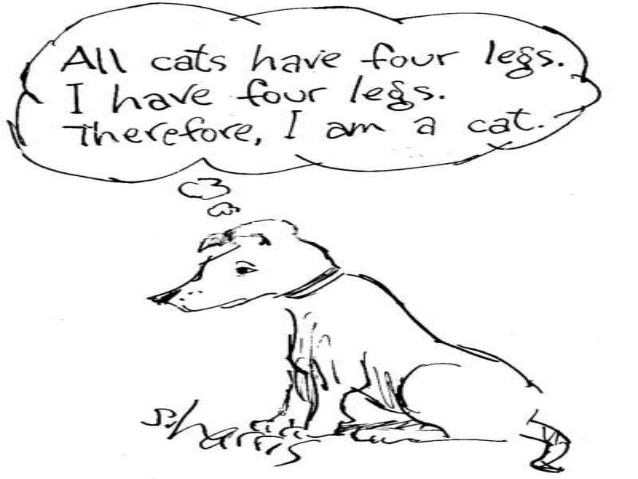Terminating counseling with clients
Counseling termination and new beginnings
When preparing for a symphony, a conductor will often tell the musicians that the last note is as important as the first; after all, the last note is what the listeners will take with them. For that reason, the final note of a symphony requires just as much artistry, thought and attention as the first note.
Much like the final note of a symphony, counseling termination requires a great deal of creativity and attention to detail. Although termination is an often neglected concept in the counseling literature, it is supremely important.
Termination is the term most commonly used to describe the process of finalizing or ending a counseling experience. Yet that word conjures up images of abrupt endings or even death, so we wish that a better phrase could be identified to describe counseling endings and transitions. Perhaps the words
finale or commencement, or even the euphemism new beginnings, would better capture the termination process.
Many if not most of our clients have experienced traumatic or adverse life experiences. Thus, the termination process can be particularly triggering and take on an even more significant meaning for these populations. Because of its importance, we believe that the termination process merits a closer look.
Ethics and termination
Ethically, it is a counselor’s duty to prepare clients for the counseling termination process and to terminate services when clients are no longer benefiting from counseling. Therefore, counselors ought to be thinking about termination, even at a first session.
When the time comes to end the therapeutic relationship, it is natural for there to be feelings of grief and loss and even an adjustment period. Some clients may struggle to negotiate healthy boundaries and the termination of relationships. Furthermore, clients who have experienced abuse or trauma may be especially sensitive to relationship transitions.
Ending a therapeutic relationship requires a great deal of thought. If done ethically and competently, termination can help solidify counseling gains, empowering clients to integrate their experiences and bravely face their next chapter in life. Termination can also help model healthy boundaries and a natural and appropriate end to a relationship. Effective termination provides clients with an opportunity for continued personal growth, whereas ineffective termination can actually harm clients.
If done ethically and competently, termination can help solidify counseling gains, empowering clients to integrate their experiences and bravely face their next chapter in life. Termination can also help model healthy boundaries and a natural and appropriate end to a relationship. Effective termination provides clients with an opportunity for continued personal growth, whereas ineffective termination can actually harm clients.
Preparing clients for termination
To best prepare clients for termination, it is essential that counselors proactively address termination. Ideally, termination should be introduced during the informed consent process. In fact, by openly discussing termination from the beginning of counseling, counselors may help galvanize client motivation because clients will see counseling as something temporary that can be used to help them reach a defined set of goals.
By weaving the idea of termination into informed consent, counselors can also encourage and elicit client feedback regarding the progress being made in counseling. Thus, clients will be liberated from the fear of “disappointing” their counselor by raising the idea of ending counseling once they feel they have received what they needed from the counseling experience. Remaining transparent about termination, from the initiation of counseling, can help clients invest in reaching their goals while concurrently empowering them to voice when they feel they are ready to end counseling.
Thus, clients will be liberated from the fear of “disappointing” their counselor by raising the idea of ending counseling once they feel they have received what they needed from the counseling experience. Remaining transparent about termination, from the initiation of counseling, can help clients invest in reaching their goals while concurrently empowering them to voice when they feel they are ready to end counseling.
Counselor adjustment to termination
Just as clients often experience a tangle of feelings around the end of a counseling relationship, counselors themselves can have emotional reactions to termination. As counselors, we invest much time, emotional and intellectual energy, and dedication to helping our clients. After all, the lifeblood of the counseling profession is based on building a warm connection with those we serve. As a byproduct of this relationship process, counselors do indeed develop emotions and thoughts regarding their clients. Consequently, when the counseling relationship ends, there is an adjustment period for counselors too.
Ideally, this adjustment period would include a space for self-supervision, with counselors objectively evaluating their performance and efficacy with the client. Counselors can identify potential growth areas and reflect on their professional strengths as part of this process.
Before engaging in such objective evaluation, however, counselors may need to sort through their residual feelings of loss. These feelings may be further complicated by countertransference. If, for instance, a counselor’s personal experience aligned with that of the client who recently terminated, the counselor’s emotional reaction may be intensified. If there is a positive prognosis for the client, the termination process may catalyze feelings in the counselor of fulfillment, competency and even confidence. If, however, the client terminates abruptly or has a less than favorable prognosis, the counselor may experience feelings of incompetence and disillusionment, especially if the counselor’s lived experiences mirror those of the client. In these instances, counselors must make processing their emotions around termination a priority.
In these instances, counselors must make processing their emotions around termination a priority.
Although it is imperative to cultivate self-awareness surrounding countertransference throughout the counseling relationship, monitoring countertransference at termination may be especially important. Counselors ought to be cognizant of their emotions and willing to process these emotions, whether positive or negative, at the end of a counseling relationship.
In summation, while clients often experience grief and a sense of loss at the conclusion of the counseling process, counselors may also have emotional reactions to the termination process. Counselors should monitor these reactions, discuss them in supervision, consult with peers, and seek personal counseling if necessary to ensure that even as they adjust to the loss of a therapeutic relationship with a client, the quality of the services they provide to their remaining clients remains top-notch. Being aware that termination is a two-way street that affects the counselor-client dyad allows counselors to more effectively understand, and thus cope with, the emotions and thoughts that ending a therapeutic relationship may stir up.
Client ambivalence around termination
Even when counselors introduce the discussion of termination in the initial stages of the counseling relationship, it is natural for many clients to experience some anxiety and disillusionment with the idea. After all, the counseling relationship may be one of the only times, if not the only time, in their lives when they have experienced safety, trust, compassion and care. Given that these virtues are basic human needs, it makes sense that clients may be reluctant to end the counseling relationship.
Some clients may manifest this reluctance by continually raising “new” issues or concerns anytime the possibility of termination is mentioned. Clients may even return to the behaviors that led them to counseling initially. For example, a client who self-injures and works toward abstinence over the course of counseling may engage in self-injury again as the idea of termination nears. Rather than viewing this as a counseling failure, counselors should remember that, like counseling itself, termination is not linear.
At its core, termination involves the ending of a relationship, likely resulting in feelings of grief and loss. Thus, space should be made for clients to experience, rather than avoid, those feelings that come with the natural ending of a relationship. Encouraging clients to utilize the coping and emotional regulation skills they have gained over the course of counseling can assist in managing the emotions surrounding termination. This action also helps to reinforce the learning that occurred throughout the counseling process. Walking alongside clients as they grieve the loss of the counseling relationship allows them to experience the conclusion of a relationship in a nurturing and empathetic environment and helps them develop so that they can better manage future losses and transitions.
Counselors should continually assess for termination readiness when working with clients. One way to do this is to ask clients questions such as, “Do you think you are benefiting from counseling?” and “How will you know when our time here together is coming to an end?” Questions such as these set an expectation that counseling will end and serve to empower clients to help determine when it will conclude. By trusting clients and actively listening to their experiences and sense of how they are (or are not) benefiting from counseling, counselors help clients prepare for the termination process.
By trusting clients and actively listening to their experiences and sense of how they are (or are not) benefiting from counseling, counselors help clients prepare for the termination process.
The termination process
When it comes to the actual process of termination, counselors can take many different approaches with clients. The interests and developmental level of clients and the content of counseling should all be considered when planning termination activities. Termination is often an ideal time to incorporate active, engaging and creative interventions that encourage clients to engage in active learning and reflection upon the counseling process as a whole.
Often, as termination nears, client engagement and enthusiasm in counseling diminish. By using active and creative termination interventions, counselors can inject new enthusiasm into the last several counseling sessions. Clients tend to more readily remember counseling interventions in which they are interactively involved.
Regardless of the specific intervention used, termination is an ideal time to incorporate an optimistic, empowering and future-oriented approach. Counselors can compassionately empathize with clients who are reluctant to terminate while concurrently encouraging them to see the end of counseling as a new adventure in which they can apply the skills they have learned throughout counseling. Assuming such a tone as a counselor assists clients in developing a future-focused orientation. This may help propel them through the natural grieving process that often accompanies the ending of a counseling relationship.
Creative termination activities
A variety of creative termination techniques can be used with clients. Ideally, the counselor can dedicate several sessions to fully processing and exploring the termination process. A few examples of creative termination activities follow.
One-way trip for trauma: This activity can be used with clients who have worked on trauma issues or those who have worked to let go of something while in counseling. Clients can take the materials that they have accumulated throughout the counseling process that are associated with their trauma narratives — writings, journals, worksheets, illustrations, etc. — and either rip them up, color over them, or simply fold them neatly.
Clients can take the materials that they have accumulated throughout the counseling process that are associated with their trauma narratives — writings, journals, worksheets, illustrations, etc. — and either rip them up, color over them, or simply fold them neatly.
After the materials are collected, counselors should provide clients with a small box or container (these are easily obtained from everyday recycled products or by purchasing them in bulk on the internet). Next, clients can be given a variety of tape. Clients then
place their trauma narrative materials into the container, tape the container shut, and decorate the container as they see fit. At this point, counselors can process with clients how their traumatic past need not dictate their future. Clients can then discuss how leaving the counseling relationship symbolizes their having processed and worked through their trauma.
This intervention can also be paired with a “new beginning” celebration to signify the start of a new chapter in clients’ lives. Although shifting the language from “termination” to “new beginning” may seem like nothing more than a euphemism, the language is immensely important. Helping
Although shifting the language from “termination” to “new beginning” may seem like nothing more than a euphemism, the language is immensely important. Helping
clients who have a history of trauma understand that they do indeed have a future, despite the pain and hopelessness they have endured in the past, is a powerful intervention.
Sticker chart/memory book: Younger clients may struggle to fully grasp the concept of termination or to engage in metacognitive reflection on the counseling process as a whole. Thus, with these clients, more developmentally appropriate and artistic interventions are often indicated. For instance, a sticker or picture chart could be maintained throughout the counseling process, with clients placing a sticker on the chart each time they come to counseling. Clients can even draw pictures, along with using the stickers, to illustrate a “story” of their time in counseling. As termination approaches, clients can further illustrate their chart, review what they have learned so far, and place more stickers on the chart signifying their achievements in counseling.
Another effective approach is working together with younger clients to create a memory book with pictures, words, stickers and decorations that will help them remember their time in counseling in a more concrete manner. Both of these interventions allow child clients to take a tangible item with them as they end the counseling process.
Aloha lei (hello-goodbye) activity: Counselors can explain to clients that the word aloha means both hello and goodbye. Counselors can then discuss with clients that every end is the start of a new beginning, as is the case with the end of counseling.
For the activity, paper flowers can be cut out (clients can select the color of the materials to enhance autonomy). Clients can write effective coping skills, memorable counseling experiences, or other notable takeaways on the flowers. Next, punch a hole in each flower and thread them along the string. Family members or caregivers can also be involved in the process (with client consent), adding their own flowers to the lei. The lei can then be given to the client as a parting gift. This intervention involves creativity and metaphor in a way that summarizes the counseling experience while actively involving the client.
The lei can then be given to the client as a parting gift. This intervention involves creativity and metaphor in a way that summarizes the counseling experience while actively involving the client.
Building blocks: This activity can be tailored to clients of any age. During the final session, counselors can bring a number of building blocks, Legos, Jenga blocks, or other toy blocks to session. Clients can then construct a tower or creation of their choosing. Each block in the creation can represent a powerful moment in counseling, a coping skill clients now possess, or another skill clients have learned during counseling.
As the height of the tower increases, clients may become anxious, especially as the tower begins to lean. If the tower ultimately falls, the counselor can explain that, given the clients’ fundamental skills — the skills they assigned to each block — the tower can be rebuilt. This intervention helps clients understand that even if they experience the inevitable “falls” of life, they possess the fundamental “building block” skills to rebuild. This intervention is a tactile and empowering activity for the end of counseling.
This intervention is a tactile and empowering activity for the end of counseling.
Goodbye letter: There are many variations of a goodbye letter that can be used as the counseling process comes to a close. Counselors can provide a letter template with certain blanks to be filled in, or they can simply provide a blank piece of paper on which clients can write their own letter. Adding prompts or sentence stems for clients to complete can add a degree of structure to the letter.
There is flexibility in terms of the letter’s point of view. Goodbye letters can be written from client to counselor, from counselor to client, or even from the perspective of the process of counseling itself being personified. Possible writing prompts include “One thing I remember from counseling is …” or “The most memorable moment of counseling was …” Although counselor creativity can yield limitless possible prompts, it is important that the goodbye letter be narrowed to focus on the most relevant moments of the counseling process. It is also important to keep the activity strengths-based (as is the case with any termination activity).
It is also important to keep the activity strengths-based (as is the case with any termination activity).
Survivor tree: Survivor trees can serve as a creative intervention to foster and celebrate resilience in the final stage of the counseling relationship. They can be either simple or complex, depending on the clients’ developmental abilities. Survivor trees may be drawn out to explore clients’ areas of growth (the branches), clients’ future hopes and aspirations (leaves and buds), coping skills that clients have learned in order to stay grounded (the trunk and roots), and even what struggles clients have worked through in counseling (dead leaves beneath the tree).
As the tree grows and expands on the paper, the counselor can weave in the idea that trees survive multiple seasons every year. Some seasons leave barren branches, whereas other seasons are rife with leaves and buds. Nevertheless, the tree survives and continues to bloom, even after a cold or barren season. Clients can then reflect how their resilience has allowed them to overcome previous barren seasons. They might also reflect on how the skills they learned in counseling can help engender resilience during future difficult seasons of life. Taking the example of the tree eventually blooming despite the adversity of winter, clients can explore how they can go forth in life and bloom beautifully, no matter the adversities they face.
Clients can then reflect how their resilience has allowed them to overcome previous barren seasons. They might also reflect on how the skills they learned in counseling can help engender resilience during future difficult seasons of life. Taking the example of the tree eventually blooming despite the adversity of winter, clients can explore how they can go forth in life and bloom beautifully, no matter the adversities they face.
Making a case for counseling: With this activity, clients are invited to create a “case” and fill it with various objects to help them summarize and conceptualize their experience in counseling. Depending on the client’s interests, the case can take on a variety of forms (e.g., a purse, an athletic shoebox, a favorite cereal box). Client autonomy can be reinforced by allowing clients creative license in decorating and designing their cases.
Clients can be encouraged to include various objects in the box that they find important and valuable to the counseling process (e. g., a grounding stone, a worksheet with coping skills, a journal). Furthermore, clients can create decorative scraps of paper to add to the box. These papers can include notable moments in counseling, emotions surrounding the counseling process, skills learned, or other tools with which the client can face the future trials and travails of life outside of the counseling relationship. If family members or significant others are involved in the counseling process, they can also add items to the client’s case (if the client agrees to their participation). This intervention is relatively open to interpretation and can include myriad creative avenues to help clients gain closure.
g., a grounding stone, a worksheet with coping skills, a journal). Furthermore, clients can create decorative scraps of paper to add to the box. These papers can include notable moments in counseling, emotions surrounding the counseling process, skills learned, or other tools with which the client can face the future trials and travails of life outside of the counseling relationship. If family members or significant others are involved in the counseling process, they can also add items to the client’s case (if the client agrees to their participation). This intervention is relatively open to interpretation and can include myriad creative avenues to help clients gain closure.
New beginnings
Regardless of the specific intervention used, termination is a vital part of the counseling process. During termination, counselors should convey a great deal of warmth and compassion to clients, while simultaneously aiming to empower them and promote their self-worth.
To reiterate, it is important to understand that semantics matter. The word termination conjures up brutal images of loss. In truth, the end of counseling is really the start of a new beginning; it is as if one chapter is closing and counselors are handing the pen off to clients to write their own next chapters. In so doing, counselors play their role in helping to ensure that the next chapter will be a good one.
The word termination conjures up brutal images of loss. In truth, the end of counseling is really the start of a new beginning; it is as if one chapter is closing and counselors are handing the pen off to clients to write their own next chapters. In so doing, counselors play their role in helping to ensure that the next chapter will be a good one.
The end of counseling, just like the end of a symphony, is not simply the end. Rather, it is a resounding note that acts as a gateway to new beginnings.
****
Victoria Kress is a professor at Youngstown State University and a licensed professional clinical counselor supervisor, a national certified counselor, and a certified clinical mental health counselor. She has published a number of journal articles on counseling termination and further addresses the topic in her textbooks, Counseling Children and Adolescents and Treating Those With Mental Disorders. Contact her at [email protected].
Contact her at [email protected].
Marissa Marie is a licensed professional counselor working at Youth Intensive Services in Youngstown, Ohio. She uses trauma counseling with those who have been involved in the sex trafficking industry. Contact her at [email protected].
Letters to the editor: [email protected]
Counseling Today reviews unsolicited articles written by American Counseling Association members. To access writing guidelines and tips for having an article accepted for publication, go to ct.counseling.org/feedback.
****
Opinions expressed and statements made in articles appearing on CT Online should not be assumed to represent the opinions of the editors or policies of the American Counseling Association.
Successful Therapy Termination (Guide) | Therapist Aid
The end of therapy can be a positive experience with a long-lasting impact on both the client and therapist. When successful, termination is an opportunity for closure. Together, the client and therapist take a step back and look at the personal growth that has slowly unfolded over the course of treatment—growth that may have gone unnoticed, had attention not been called to it.
When successful, termination is an opportunity for closure. Together, the client and therapist take a step back and look at the personal growth that has slowly unfolded over the course of treatment—growth that may have gone unnoticed, had attention not been called to it.
In reality, termination starts long before the end of therapy. In the very first sessions, the therapist will begin to lay the groundwork for termination by setting clear therapeutic goals and describing therapy as a time-limited process.
As the therapeutic relationship comes closer to an end, termination will be discussed more frequently. The therapist will highlight the growth made by the client, and help them create a plan to handle future problems.
In this guide, we outline a successful termination in two parts. “Laying the Groundwork for Termination” describes the role that termination plays throughout therapy. “The Termination Process” discusses the final sessions of therapy, when termination comes to the forefront of the conversation.
Laying the Groundwork for Termination
Prepare clients for termination from the start.
Begin laying the groundwork for successful termination from the very first session by describing therapy as a time-limited process. This means that therapy will not go on forever. The client’s goal is to develop the tools or make changes that allow them to lead a healthy life without therapy. This sets the expectation from the start that termination is a positive goal.
It is also helpful to set a rough timeline for treatment. Doing so reinforces the idea that treatment is time-limited. Of course, it’s impossible to know exactly how long a client will be in therapy, but it’s helpful for clients to have an idea of what to expect. Estimates can be based on therapeutic experience or suggestions from manualized treatments.
Set therapeutic goals to mark a “finish line” for therapy.
Treatment plans help guide therapy by outlining the client’s goals and objectives. Without such goals, therapy can become aimless as new problems arise each week, causing therapy to continue indefinitely. Goals create a clear “finish line” for therapy and give each session direction.
Goals create a clear “finish line” for therapy and give each session direction.
Collaborate with the client to establish specific, achievable, and measurable treatment goals. Create a copy of the treatment plan for your records and for the client to keep. Refer to the plan regularly to make sure therapy is on track and to reemphasize the structured nature of therapy. Remember that goals are not set in stone--they should be revised as needed to ensure they’re still relevant and attainable.
Tip: When a client has a new “fire” to put out each week, it can be difficult getting to treatment goals. If this becomes a distraction, make an agreement with the client to talk about that week’s problem for the first 10-15 minutes of each session. Afterwards, move on to the broader treatment goals.
The Termination Process
As the client’s time in therapy draws to a close, termination becomes the focus of sessions. Termination is a time to review the client’s achievements and reinforce plans for maintaining good mental health. The information below will help you facilitate a smooth and successful termination process.
The information below will help you facilitate a smooth and successful termination process.
Gauge readiness for termination.
Generally, therapy is completed when a client has achieved the goals outlined in their treatment plan. However, this decision is a matter of professional judgment. When therapeutic goals are nearing completion, discuss the client’s readiness to terminate and their feelings--whether positive, negative, or ambivalent--related to ending therapy.
Sometimes, clients feel content with the progress they have made, and express that they are ready to end therapy. They may ask how much longer they need to be in therapy or how many sessions they have left. Other times, clients will offer subtle cues to their being ready for termination. These might include prioritizing other things over therapy, cancelling sessions, or not completing homework. Discuss whether these behaviors mean the client is avoiding working in therapy, or whether they are ready for termination but hesitant to say so.
If the clinician agrees with the client’s readiness for termination, this is an opportunity to begin collaborating on closure. If the clinician has concerns about the client’s readiness, this is an opportunity to discuss those concerns.
Some clients may be reluctant to end therapy. They might enjoy the routine of coming to regular sessions, or worry they won’t be able to maintain their achievements on their own. Explore the client’s reluctance and what can be done to help them feel ready for termination. In these cases, it’s often appropriate to use a “fading out” approach, where the frequency of sessions is gradually reduced.
Note: Sometimes it is appropriate to end a therapeutic relationship and refer the client to a provider who is better suited to their needs. This should happen when:
- The client’s issues are outside the scope of the clinician’s areas of competency.
- Interpersonal differences between the clinician and client cannot be overcome.

- The client has been in treatment for a considerable amount of time and has shown no progress or a worsening of symptoms.
Review gains made in treatment.
Sometimes the positive changes that are fostered during therapy happen so gradually that they go unnoticed. Reviewing a client’s progress throughout treatment--and particularly at termination--will highlight these positive changes.
As a therapist, you might see positive changes in the client that they have yet to notice. When you compare the first few sessions to the most recent sessions, look for changes in the following areas:
- More positive body language
- Decreased symptom severity
- Improved relationships
- Positive outlook on the future
- Improved functioning at home, work, or school
Point out these improvements by sharing specific changes you’ve seen in the client. For example:
Example: "During your first sessions, it was terrifying for you to talk about your trauma. When you tried, your body shook, and you would try to change the subject. Now you’re able to tell the story almost matter-of-factly, without a single tear. Even though you still have painful feelings about the situation, and you still have some difficult moments, you have come a long way."
When you tried, your body shook, and you would try to change the subject. Now you’re able to tell the story almost matter-of-factly, without a single tear. Even though you still have painful feelings about the situation, and you still have some difficult moments, you have come a long way."
Regular assessments are another tool for highlighting positive change. Choose an assessment that fits with a client's presenting issue, and ask that they complete it regularly. Over time, these assessments will begin to show trends in the client’s mood and functioning.
As therapy nears its end, these assessments will allow a client to clearly view their improvements, based upon their own self-report. If it makes sense for the particular assessment, the therapist may graph the results to further highlight the trends.
Wellness Assessment
worksheet
Finally, ask your client to review the changes they have noticed. Have they noticed improvements in their lives outside of therapy? What has been noticeably helpful? Below are some questions to begin exploring:
- Of what we’ve done so far, what has been the most meaningful or valuable to you?
- What have you learned or accomplished?
- What positive changes have you noticed in your life?
- How will you continue to use what you have learned?
- What do you want to remember from therapy?
- How do you think you will look back on our work?
Create a mental health maintenance plan.

Many issues that bring clients to therapy have a high risk of relapse and require ongoing maintenance. Because of this, it is important that clients have a plan for dealing with a recurrence of their presenting problem. Depending on the issue, this might mean returning to therapy.
A mental health maintenance plan helps clients recognize ongoing mental health needs by summarizing their triggers and warning signs. Additionally, it reminds them how to manage these needs by using self-care, coping strategies, and social support. These topics will be addressed throughout therapy but should be reviewed during the termination process.
Triggers are emotions, situations, people, places, or things that elevate the risk of the presenting problem recurring. For example, high levels of stress, interpersonal problems, and grief could all act as triggers. A mental health maintenance plan helps a client understand their triggers and how to avoid or manage them.
Warning signs are clues that the presenting problem might be returning or intensifying. For example, a client who presented with depression might note that their illness worsened after they isolated themselves from friends and family. When the client notices this behavior in the future, they will know to use an appropriate coping strategy or return to therapy.
For example, a client who presented with depression might note that their illness worsened after they isolated themselves from friends and family. When the client notices this behavior in the future, they will know to use an appropriate coping strategy or return to therapy.
For an outline of this process, try the Mental Health Maintenance Plan worksheet:
Mental Health Maintenance Plan
worksheet
Conclusion
When it’s time to part with the client, the process may be straightforward and professional, or it may be more emotional. The client may experience a wide range of emotions, from sadness and a sense of loss, to pride, satisfaction, and a sense of independence. Allow the client to express their emotions, and validate their experience.
A therapist’s reactions may be just as varied. Commend the client for their hard work in therapy and take pride in what you and the client accomplished together.
To learn more about the termination process, check out this book:
Terminating Therapy: A Professional Guide. ..
..
book
1. Davis, D. D. (2008). Terminating therapy: A professional guide to ending on a positive note. John Wiley & Sons.
2. Davis, D. D., & Younggren, J. N. (2009). Ethical competence in psychotherapy termination. Professional Psychology: Research and Practice, 40(6), 572.
3. Fragkiadaki, E., & Strauss, S. M. (2012). Termination of psychotherapy: The journey of 10 psychoanalytic and psychodynamic therapists. Psychology and psychotherapy: Theory, research and practice, 85(3), 335-350.
4. Knox, S., Adrians, N., Everson, E., Hess, S., Hill, C., & Crook-Lyon, R. (2011). Clients' perspectives on therapy termination. Psychotherapy Research, 21(2), 154-167.
5. Safran, J. D., Muran, J. C., & Eubanks-Carter, C. (2011). Repairing alliance ruptures. In J. C. Norcross (Ed.), Psychotherapy relationships that work (2nd ed., pp. 224–238). New York, NY: Oxford University Press.
6. Segal, Z. V., Pearson, J. L., & Thase, M. E. (2003). Challenges in preventing relapse in major depression: report of a National Institute of Mental Health Workshop on state of the science of relapse prevention in major depression. Journal of Affective Disorders, 77(2), 97-108.
E. (2003). Challenges in preventing relapse in major depression: report of a National Institute of Mental Health Workshop on state of the science of relapse prevention in major depression. Journal of Affective Disorders, 77(2), 97-108.
7. Swift, J. K., Greenberg, R. P., Whipple, J. L., & Kominiak, N. (2012). Practice recommendations for reducing premature termination in therapy. Professional Psychology: Research and Practice, 43(4), 379.
8. Vasquez, M. J., Bingham, R. P., & Barnett, J. E. (2008). Psychotherapy termination: Clinical and ethical responsibilities. Journal of Clinical Psychology, 64(5), 653-665.
Reasons for stopping psychotherapy - Help from a professional psychologist, cognitive behavioral therapy
CBT counseling
When you first decide that it would be a good idea to start psychotherapy, you don't think how it will end. You are most likely wondering how much time and money psychotherapy will take, what benefits you can get from it, but I bet that you hardly think about in what form, and also for what reason Your communication with the psychotherapist will stop. And who will initiate the end.
And who will initiate the end.
However, in any psychotherapeutic process, regardless of whether it lasted a month or a year, the end is always laid down. It constantly pops up here and there; moreover, it can be related to how you generally relate to the end of something .
❗️You should always know that if you voluntarily start psychotherapy, you can also voluntarily stop it at any time, for any reason.
The best reason on the part of the client
Of course, it would be desirable that the main reason why you stop psychotherapy is this: you have come to terms with yourself, with the world, you have received answers to your questions, you have learned a lot of new things and useful, you see a great path to the future ahead of you, and ... you no longer need a psychotherapist.
Although he is undeniably professional and likeable as a person, his importance to you is diminishing. So that's all, thank you very much and goodbye. Great option. But in reality, there are often others.
Great option. But in reality, there are often others.
Reason less desirable, but also valid
This is best explained with an example. Let's say a client comes to psychotherapy because of a job loss and depression. It seems to him that as soon as he finds a job, his depression will immediately melt without a trace ( which is not at all a fact ). However, as soon as the client actually gets a job, he decides to stop seeing a psychotherapist, despite his well-being. There can be a variety of pragmatic reasons why this is the case:
- has no time to travel or travels far,
- really hopes that soon everything will go away on its own,
- feels an initial improvement in well-being from psychotherapy and decides to save money in the future or is sure that he can cope further on his own.
In any case, the client has every right to do so - his life, he makes decisions.
Diaries for self-guided CBT psychotherapy
Helps to work with self-confidence, self-esteem, anxiety, depression.
Designed by a psychologist
Not a very desirable reason
Unfortunately, this also happens: the psychotherapist turns out to be not a psychotherapist at all. Or a psychotherapist, but he studied poorly. Or he studied well, and the psychotherapist, but for some reason does his job unprofessionally. If the client feels that he cannot trust this person for any reason, then the only way out in this situation is to stop the psychotherapeutic process. But! It would be a good idea to discuss these feelings with a therapist first, as it may well turn out that you can deal with them, and everything will be fine further.
If the specialist you are seeing seriously violates the ethics of his work, for example, induces you into any kind of relationship outside of psychotherapy or discusses his problems with you, then you are advised to immediately stop psychotherapy with this specialist.
Psychotherapy Termination Form
Whatever your reasons for terminating, always do so with respect.![]()
As I said above, often the main thing is not the reason for the termination, but how it is arranged and implemented. You, as a client, of course, have every right to stop psychotherapy for any reason - and even for no reason - but we, as psychotherapists, very much hope that this will be done respectfully and openly . What does this mean?
- If, for example, you didn’t show up for an appointment one day, didn’t call, didn’t write, and don’t answer calls and letters, this can be called “hiding” rather than “respectfully and openly end the relationship ".
- If you have other interests and hobbies, and there is no time for psychotherapy, this is more like an “escape” than the end of a relationship.
- If you get angry with the therapist and instead of discussing these emotions with him, you decide to just not come back - it's more of an "avoidance" or "disappearance".
Therefore, respectfully and openly to stop psychotherapy is to talk about it with a psychotherapist.
!! However, if you made such an attempt, and in response you heard neglect, humiliation, criticism against you, well, then you really have a not very desirable reason for stopping . Praise yourself for at least making an effort to be respectful and honest.
And after you've talked about stopping, go to a session or two to remember what your therapy was like. Except, of course, not very desirable reasons . Look back and remember what your life was like before psychotherapy. Think about how you have traveled, how much you have grown, what you have learned. Assess what remains to be done. Be aware of your weaknesses and imagine how you can go into the future, what problems you can expect there and what is your plan to help you cope with them.
After such a respectful, honest, polite and open termination, you may well expect to return to this therapist if necessary, for one session or more, and not experience any inconvenience.
Termination of psychotherapy by the psychotherapist
There are situations when the psychotherapist is forced or must end the relationship with his clients.
- For example, if he works in a clinic that provides him with clients, and for some reason this clinic decides to fire the psychotherapist. In this case, for many of his clients, the relationship will end, and prematurely. Theoretically, he could "lure" clients to another clinic or to his private practice, but this is not always possible under the terms of cooperation.
- It also happens that a psychotherapist experiences various, including negative, emotions in relation to a client. This is called countertransference. In theory, the therapist should discuss these feelings with colleagues or with a supervisor, and there it may be decided that it is in the best interest of the client to end therapy and refer the client to someone else.
- It happens that the psychotherapeutic process goes so far (or deep) that the therapist feels that he does not have sufficient knowledge or skills to continue effectively. In this case, it would also be ethical to terminate the process.

And just like the client, the psychotherapist must conduct the withdrawal process ethically, respectfully and openly towards the client. This should be done in advance so that there is an opportunity to discuss the client's thoughts and emotions about this.
Please note: This content requires JavaScript.
If it was useful for you
If it was useful for you
relationship with money at different stages of the process //Psychological newspaper
Money is an important psychotherapeutic tool in working with a client. But the therapist himself can have strong feelings and, in some cases, serious difficulties when dealing with money issues. Let's see what kind of relationship with money the therapist has at different stages of the psychotherapeutic process. Conventionally, we will divide this process into three stages: 1. Before the start. 2. Conclusion of the contract. 3. Continued work. Let us remember that this division is conditional, and similar feelings and situations may arise at different stages.
Before starting therapy
The therapist determines for himself how much his services cost. He asks himself questions:
- How qualified am I? The therapist evaluates his education, work experience ...
- What services can I offer?
- Topics I work with, techniques I know.
- Long-term or short-term therapy?
- Am I ready to make “package offers”.
- Hourly or per session?
- Will I take prepayment?
- In what context will the consultation take place? In the social center or in a well-equipped office with leather chairs, in the city center or on the outskirts? Is there a cooler, coffee making facilities in the room? All this is part of the service and affects its cost.
- What clients will come to me and will I change the payment depending on their capabilities?
The therapist must decide on all this and be prepared to answer questions that the client may have.
Why psychotherapy is not free
Payment for therapy is part of the therapy itself. Payment simplifies the client-therapist relationship, making it more transparent than people's relationships in everyday life.
Due to social relationships, the capacity for which is brought up in us from childhood, we feel the need to maintain emotional balance. The simplest formula of his "you to me - I to you."
Assuming a situation in which the therapist gives his time and attention free of charge, then the client will still "pay" for this emotional contribution with a feeling of gratitude or guilt, or an eternal obligation or ...
In the same way, the therapist will receive his payment, if not in money
That is, the exchange always takes place - either money or feelings. Money is easier, otherwise this is a field for the emergence of psychological games.
Conditionally free therapy is possible in social institutions where the therapist receives a salary - that is, payment from other sources. However, in this case, the therapist-client relationship includes a third: the state or organization, which may have its own interests (for example, they may insist that therapy be short-term, regardless of what the client needs).
However, in this case, the therapist-client relationship includes a third: the state or organization, which may have its own interests (for example, they may insist that therapy be short-term, regardless of what the client needs).
The therapist, in turn, not having received money for his work, may feel used, dissatisfied, which will manifest itself in the relationship with the client.
If the therapist gets more...
The reverse situation may arise: the payment is higher than that which the psychologist considers adequate for himself. For example, a wealthy client is willing to pay more - and the psychologist takes advantage of this willingness. In this case, he may feel guilty for not “giving” the client, showing inadequate benevolence, a desire to “please” the client, dependence on the client. Or experience a sense of inferiority due to the assessment of their professionalism as insufficient.
This can have a negative effect on the client as well, since the specialist's uncertainty and incongruity can be misinterpreted by the client.
To avoid such situations, you should think over the question in advance: what do I intend to do if the client offers payment for my services more than the usual amount for me.
Subtotals
If the therapist values his work more than the client is willing to pay, this is due to the client's desire to devalue the therapist's contribution or the significance of the changes he (the client) expects. Most likely, in this case, the contract will not be concluded and the therapy will not take place.
The client wants to pay more than the therapist is willing to accept. This may indicate a low professional self-esteem of the therapist, a client demonstrating his high status or expecting a special attitude towards him. In this case, a contract can be made, but the success of the therapy is highly questionable due to the fact that the therapist may unconsciously try to meet the client's expectations.
Payment time
Not only the amount can matter, but also the time at which the client gives money: before the session, after, or in advance for several meetings. Moreover, the preferences of the parties may not coincide. For example, an anxious client tries to pay up front, but the therapist does not want to take the money until the work is completed. The therapist's reluctance to take money up front may indicate his anxiety about his qualifications or his history of dealing with money in general.
Moreover, the preferences of the parties may not coincide. For example, an anxious client tries to pay up front, but the therapist does not want to take the money until the work is completed. The therapist's reluctance to take money up front may indicate his anxiety about his qualifications or his history of dealing with money in general.
Or vice versa: the client wants to pay for the result, but the therapist prefers upfront payment (in our next section, we will mention the case when the client refused to pay, explaining the refusal by saying that they "just talked").
Such a discrepancy is an occasion for a more detailed contract, as well as for an additional discussion with the feelings of both parties, an occasion for an additional theme of therapy for both.
Package offer
Some specialists provide discounts for a package of services. That is, it is stipulated that if the client pays for several meetings at once, then the cost will be less.
What feelings and consequences might arise in this case?
By offering several meetings, the psychologist is supposed to make a promise that the problem will be solved or that the client will make significant progress towards a solution during therapy. And such a promise can become a trap for both participants in the process. After all, we know that the result of therapy is the responsibility of the client, while the therapist is responsible for the properly organized process of therapy. The therapist cannot be responsible for the speed of change in the client and his desire to move towards the result, therefore, he cannot guarantee the achievement of this result within the specified time.
And such a promise can become a trap for both participants in the process. After all, we know that the result of therapy is the responsibility of the client, while the therapist is responsible for the properly organized process of therapy. The therapist cannot be responsible for the speed of change in the client and his desire to move towards the result, therefore, he cannot guarantee the achievement of this result within the specified time.
What can a therapist do?
Can motivate the client. To help overcome his own ambivalence (“want and do not want change”), which is often present at the beginning of therapy.
Can share personal observations about the speed with which other clients overcome similar difficulties. Or general data about the work of other therapists.
Customers react differently to the offer of a service package.
Client 1 (female, 48 years old, teacher of literature) says: “I will never go to a therapist who cuts fees if I “buy in bulk” 10 appointments. I think that they are just trying to untwist me for money.
I think that they are just trying to untwist me for money.
Client 2 (male, 29 years old, bank employee) says: “I like this offer. Firstly, they honestly tell me that the problem cannot be solved at once. Secondly, if we suddenly solve it earlier, I will find something to occupy the rest of the meetings. Again, savings!
A package offer can become one of the criteria for dividing clients into "us and not ours". The main thing is that customers, "their own" according to other important criteria, are not left behind as a result of this or that commercial offer.
What else affects pricing?
This is not only the knowledge and experience of the specialist, but also the place, time and appearance of the psychotherapist.
The client says: “I agreed to work on Skype and was shocked when I saw a female psychologist with unkempt hair, at home, with some kind of mess in the background…”
Entourage is part of the service. The service of a psychotherapist, expensively dressed, well-groomed, with a manicure, who takes in a quiet place near the metro, in the city center, in a cozy office room with leather chairs, will cost more. And this is true not only because he pays rent. But because such a technique translates to the client a different, more respectful attitude towards him and his needs.
And this is true not only because he pays rent. But because such a technique translates to the client a different, more respectful attitude towards him and his needs.
Conclusion of a contract between a therapist and his client
Possible Psychological Difficulties for Therapist:
“I thought I thought it through, but the moment I heard the client ask, “How much does it cost?” I was overcome with mixed feelings. It was embarrassing for me to name the number, it seemed to me that I would make myself greedy ... ”- says the novice therapist.
These kinds of experiences are connected both with the family history of the therapist and with the history of attitudes towards money in our country. For a long time it was believed that talking about money is shameful. Emotional relationships (often referred to as psychotherapy) are more valuable than money. And an honest person cannot be rich: "From the labors of the righteous you will not make stone chambers. " Selling (being a huckster) is also shameful, especially if the subject of sale is psychotherapy - a service about which clients may have their own ideas or fantasies.
" Selling (being a huckster) is also shameful, especially if the subject of sale is psychotherapy - a service about which clients may have their own ideas or fantasies.
At the same time, clients often regard the financial success of a psychotherapist as a confirmation of his professional competence. A contradiction arises: the therapist feels that in order to earn the client's trust, he must live up to both myths at the same time - to be rich and "honest" at the same time.
In order for the therapist to be able to resolve these contradictions, he himself must undergo personal psychotherapy before entering the free market with his paid services.
It is sometimes possible to ask a client “what price do you consider acceptable for yourself?” And agree to a lower payment if this case is of some interest to the therapist. Or the therapist wants to give the client this kind of gift in connection, for example, with the sympathy that has arisen. It is important for the therapist to be aware of what compensation he receives instead of money.
Concluding a contract
The client must understand everything the therapist tells him about the terms of the service and agree with it. If the therapist has not obtained the consent of the client, this is the basis for subsequent misunderstandings.
Recently, a colleague complained about the situation when, having already received a consultation, the client refused to pay for it, explaining that they “just talked” with him.
The therapist must not only make a clear contract, but also make sure that the client really understands it. This will help to avoid ambiguities and mutual claims.
A client says: “They told me the price - and I understood what it was for the session, but when I finished, I was asked for an amount that was three times higher than the quoted one. I paid but won't go again. I'm left feeling like I've been swindled."
Therapist says: “My website clearly states that the pay is hourly. If the client is outraged, that is his problem. ”
”
Misunderstanding of the client is the fault of the therapist. It would be frivolous to rely on the fact that a person, captured by his emotions (as is often the case with clients, especially beginners), remembers well what was written on the site. Moreover, he may not have even paid attention to it. Therefore, in the case of hourly payment, the task for the therapist is to check whether he was understood correctly. For example, after the first hour of the consultation has passed and the client continues to enthusiastically tell his or her life story, the therapist might gently say, “I don’t want to interrupt you, but I think it’s right to remind you that I’m on an hourly basis and the next hour is about to begin, which is also payable. But if you are ready to continue, I will listen carefully.” This will help avoid misunderstandings.
Missed appointment
It is important to discuss with the client how the missed appointment will affect the payment. There are different approaches here. Many therapists do not charge for an appointment if the client gives more than 24 hours notice of cancellation. But if he calls an hour before the meeting or right at the appointed time with the words “I won’t be able to today”, then most prefer payment. As in the case if the client simply does not come to the meeting without explanation.
There are different approaches here. Many therapists do not charge for an appointment if the client gives more than 24 hours notice of cancellation. But if he calls an hour before the meeting or right at the appointed time with the words “I won’t be able to today”, then most prefer payment. As in the case if the client simply does not come to the meeting without explanation.
In order for the relationship to be open and equal, payment should also be discussed in the event of a psychotherapist canceling a session. For example, in case of illness.
Here is an example of a solution to this problem: “If I cancel an appointment on the same day it was scheduled, then the next time I do not charge the client. But if I warn the client about rescheduling the meeting the day before, then the payment remains normal.
Other solutions are possible - but they are also best discussed with the client "on the beach" before such a situation arises.
Prepayment
How to avoid cases when a client, having made an appointment, does not come to it and does not even call, or calls with the words “I'm sick”, “let's do it another time, I can't do it today”. Or does he not call or answer the therapist's calls at all? (But the therapist has plans, a schedule, other clients. Or he spent two hours on the road just for one visitor, and even paid for the rent of the consultation room). A tool for this can be an advance payment.
Or does he not call or answer the therapist's calls at all? (But the therapist has plans, a schedule, other clients. Or he spent two hours on the road just for one visitor, and even paid for the rent of the consultation room). A tool for this can be an advance payment.
By requiring payment (for 1 or even several sessions) in advance, the therapist may explain that this is a guarantee of the client's seriousness.
Money in psychotherapy necessarily reflects the relationship with money in general on both sides. The client may project onto the therapist their relationship with significant figures from their past about money. The psychotherapist, due to countertransference, may also experience certain difficulties in monetary relations with certain types of clients.
Clients sometimes tend to be manipulated by the fact that they are experiencing mental anguish and therefore they should be pitied and helped for free or cheap. The therapist should stock up on the ability to refuse, or at least choose to agree or refuse. Psychotherapy service is not for everyone. The client, in fact, hires himself a very skilled assistant who helps him to carry out a very difficult job to improve his life. This is an expensive service. The client, if he is really motivated to get the desired changes, can do it on his own, for example, by reading psychological literature.
Psychotherapy service is not for everyone. The client, in fact, hires himself a very skilled assistant who helps him to carry out a very difficult job to improve his life. This is an expensive service. The client, if he is really motivated to get the desired changes, can do it on his own, for example, by reading psychological literature.
Any breach of agreement should be subject to discussion. At the same time, it is important that the therapist monitor his feelings and not take the position of the Persecutor, the Strict Parent or the Moralist. The discussion is always conducted within the framework of the therapeutic process and aims to clarify, first of all, for the client himself, the motives of his behavior.
In some cases, it is possible to pay for therapy based on the result - or at the end of a certain stage. This decision is made by the therapist and discussed with the client.
Continuation of work
The frequency and duration of meetings may vary.
Client says: “When I came to therapy, I was very ill, and we met twice a week - I barely made it until the next time and lived only with the thought of meeting. But now, three years later, I feel much better. In general, I am coping with life, but I still need support, so once a month I meet with a therapist.
Long-term therapy may require renegotiation of the contract. Firstly, the value of money changes due to inflation, and secondly, a decrease in fees may be an incentive to continue therapy. As well as her promotion. In this case, we return to point 2. You should not think that the client already “understands everything himself” - it is better to ask him a few additional questions to make sure that there are no discrepancies.
Gifts
An important point to note is that if the client brings a gift to the therapist, or the therapist wants to receive a gift as a thank you, this is a signal that the monetary contract needs to be revised.
In any case, the client's gifts should be discussed (not banned!) in therapy. Here again, the therapist needs to pay attention to his own feelings, which will help him quickly get a signal that the gift is acceptable. The question of small gifts for the holidays remains open: this is a socially approved ritual, and the client can follow it without attaching much importance to it.
Client (female, 58 years old) says: “I brought my analyst a beautifully packaged Christmas toy for the New Year, and he began to ask me what meaning I put in this gift, what does it mean to me, what do I mean ... It seemed to me that the number of questions does not correspond to the value of my gift, and I felt as if I was indirectly accused of something and expected excuses from me. I soon decided to stop therapy.”
Money as a therapeutic tool
The client sometimes demonstrates resistance to the therapy process, including forgetting to pay for it. Or being late and skipping sessions. In these cases, the appropriate response of the therapist is to return to the topic of the contract and increase the payment.
In these cases, the appropriate response of the therapist is to return to the topic of the contract and increase the payment.
Pay reductions may be used as an incentive to continue therapy or increase the frequency of appointments if the therapist feels this is beneficial to the client.
Sometimes the very fact of high therapy fees can be an incentive for a client to initiate change. By paying a significant amount for a consultation or training, the client may feel a greater sense of responsibility and desire for change. We believe that as a therapeutic tool, the client's financial contribution should not be excessive, but meaningful to him. In some cases, close to the border of his financial capabilities. In any case, the willingness to pay for therapy is directly related to the severity of the client's situation and the desire to change it. So payment is an effective tool of psychotherapy. Otherwise, psychotherapy can turn into a pastime. Therapy becomes a means of entertainment for the client or a way to fill a psychological void, without the goal of achieving meaningful personal change.













